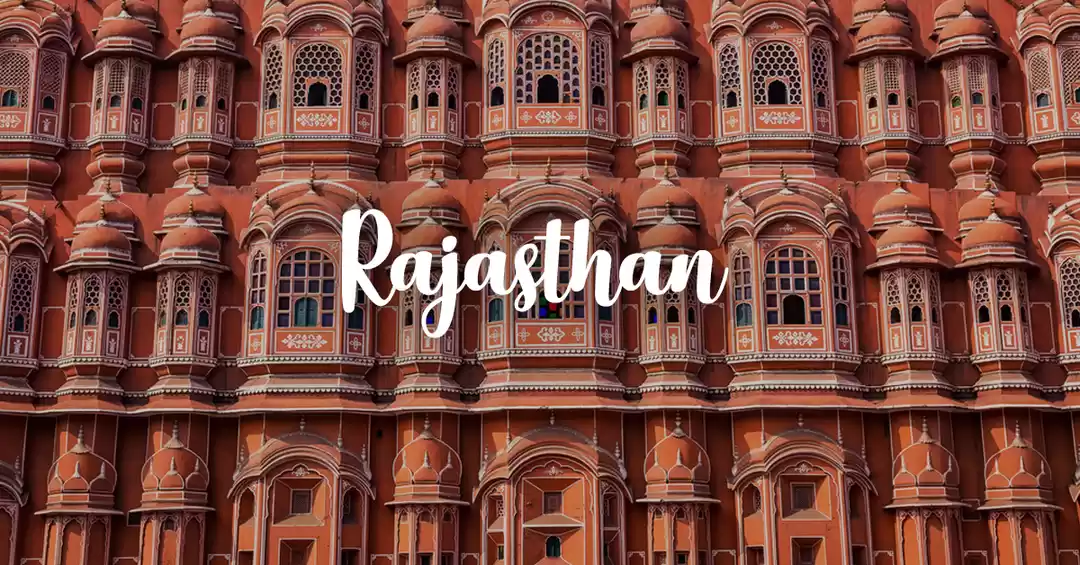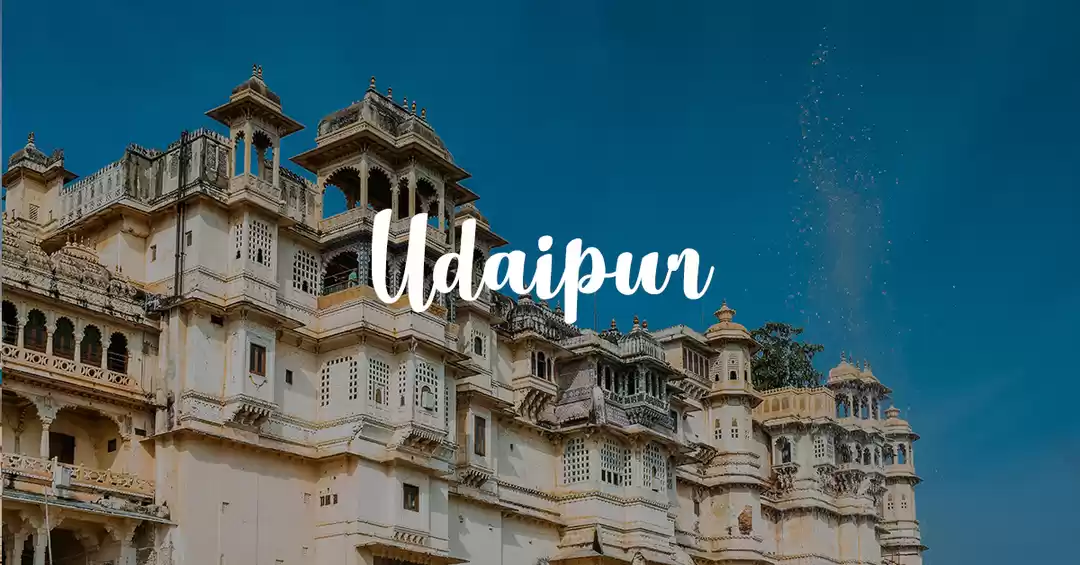
The Blue City…
I was back home in India during the post-monsoon part of the year – around September, 2013. During this visit, I had an incredible trip across the length of Rajasthan – The Royal State. This is the second in a series of three blogs I write about my journey across the sand-dunes and through fortified cities…
As the sun began to set, our train slowly pulled out from the golden station of Jaisalmer. Through the tinted glasses of the train window, I looked back one last time towards the golden crown on top of the hillock beyond… as the sun set behind it…
The journey was short – about six hours. So, by the time we reached Jodhpur, it was nearing midnight. A quick drive brought us to our hotel. And even though everyone was pretty tired after the day, something more attractive than sleep forced us to spend a few minutes at the roof of the hotel. From the roof-top, the whole city of Jodhpur was visible. But it was not the dimly-lit city houses that had drawn our attention. It was something else. Exactly between the hotel, on opposite directions were two mighty structures – lit up by strategically positioned lights. One one side stood, with a huge pearl colored dome four tall minarets, the Umaid Bhawan Palace. And on the other side, on top of a high cliff, the mighty protector of Jodhpur – Mehrangarh Fort.


Mehrangarh Fort and Jaswant Thada
Next morning, after a quick breakfast, we drove off to visit the Mehrangarh Fort. Unlike Jaisalmer‘s Golden Fort, Mehrangarh is neither a living fort nor as big in size. While Golden Fort had huge living space for civilians and armed forces alike, along with a strong defense, Mehrangarh was mainly built as a defensive structure, where along with the royal family, only soldiers would reside. Another point of note is that Mehrangarh (unlike most Forts in India) is privately owned by the royal family of Jodhpur. Being a private property, the fort has been very well maintained -with cleanliness and facilities at par with the better restored and maintained forts and palaces of Europe.

Umaid Bhawan Palace
The next day, we left early for our next destination – the grand Umaid Bhawan Palace. Umaid Bhawan Palace was commissioned by Maharaja Umaid Singh in 1929 on top of Chittar Hills in Jodhpur. The royal family moved into Umaid Bhawan in 1943 and presently is owned by the current Maharaja of Jodhpur. Umaid Bhawan is divided into three parts – a third of the palace comprises of the living quarters for the royal family, a small portion is converted to a museum and the rest of the palace is now a heritage hotel. To describe Umaid Bhawan… We started off with the small section containing a few vintage cars – a selected collection of Benzs and Cadillacs. The museum had in display the collected items of the royal family – huge collection of photos, china-wares, trophies and awards, clocks, and many more. Huge photo-galleries were dedicated to displaying the life and style of the erstwhile kings. After the escorted tour of the palace by ‘turbaned’ ushers, I thought, given its hype, the museum would have done a bit better with more displays. Nevertheless, it was a good attempt to display royal heritage of Jodhpur.

In bed, I decided to have a quick look into the history of Jodhpur. Jodhpur was founded in 1459, when Rao Jodha – the Rathore Rajput king of Marwar (a region comprising Jodhpur and its areas surrounding areas) – moved his capital from the nearby town of Mandore. Jodhpur state served as a fief under the Mughal rules, enjoyed the Mughal patronage and long periods of peace, and as a result, the Marwari community prospered as a trading class – which, even today, play a major role in Indian trade scenario.
As the walk up was pretty steep, we chose to take a lift (Yes, there’s lift!) to a higher level. At the higher level, our guide showed us around the different chambers in the fort open to public – the halls of palanquins, turbans, royal costumes, silverware and other domestic appliances of the royal families of past. The gallery of weapons – that included some rare collection, such as swords presented to the Jodhpur royal family by the Great Mughal Emperor, Akbar – and miniature Rajasthani paintings were truly impressive. In the art gallery, the lineage and the portraits of the Rathore rulers were well depicted. Following this, we walked into the Durbaar Hall – the court room for the kings. All the windows, doors, walls and ceiling of the room were decorated with colored glass – work with gold and silver paintings. Our guide said that it used to wear a more lavish look when precious and semi-precious stones adorned the decorations. As if all this wasn’t enough lavish!

Coming out of these galleries, a huge courtyard greeted us. It was on the top most level of the fort with the periphery courtyard being surrounded by multiple heavy cannons – a line of defense to ward off enemy threat. And beyond this ring of cannon, down below, was the city of Jodhpur. Remember me talking about Jaisalmer being the Golden City. Well, from the courtyard, the only color I could see was blue! Bright whitish blue! It seemed every house was painted with the same color. And actually, they were! It was an awesome sight of Jodhpur – truly, the blue city… However, every beauty has a darkness behind it! As I wondered about the reason for all the houses being blue in color, the ugly truth behind the beautiful facade dawned. The houses were painted in blue in those gone-by ages to demarcate the castes of the people living in them. Brahmins, or the priests, were (and still are) considered the high-caste people and it is their houses that were painted blue, as a warning to low-caste people to stay away from those ‘inaccessible’ places. However, such discrepancy existed years ago, and our guide assured us that such discrepancy doesn’t exist to this day. Today all (including non-Brahmin) houses are painted blue to give Jodhpur its unique look. Indeed, discrepancy based on caste and creed has always been a dark blotch on the face of Indian Civilization, and here was a glorious example of it – even though the present evidence is years old now.

After that, we decided to go back – but this time walking down the slopped path of the fort entrance. After descending from the fort and a short trip to Jaswant Thada – the royal enclosure with a beautiful garden and decorated tombs erected in honor of the dead kings of past – just next to the fort, we drove back to our hotel. As it was already evening by then, we decided to have a look at the local market for traditional Rajasthani crafts. Traditional Rajasthani ‘Bandni‘ art, colorful jewellery decked with precious and semi-precious stones, Rajasthani dolls and other decorative… the list is endless as to what Rajasthan has to offer. Our day ended with a glass of Makhania Kesar Lassi – a thick and creamy yogurt based drink, flavored with saffron and nuts.

We spent some time walking around the garden outside, and enjoying the majestic looking view of the palace. I believe it certainly would be an experience to stay in the hotel for a couple of night – get the complete royal treatment. Not this time around, I guess but maybe sometime in future. After that, we drove back to the city quickly to grab a quick lunch before we headed to the station to catch our train to our next destination – Jaipur. But then, I guess no story of mine can end without a glimpse of the culinary delights we experienced. Here is on exclusive shot of what you can expect from a typical Rajasthani Thali. (The concept of Thali is unknown outside the Indian Subcontinent. So, for those who don’t know, here is what Wikipedia has to say about Thalis.)

Even though Jodhpur was a short trip, and given that it had, quantitatively, fewer sights to offer than Jaisalmer, qualitatively, it had a lot to offer – showing a true glimpse of the royal lifestyle of erstwhile kings in India. We eagerly waited for the next destination – Jaipur.
























